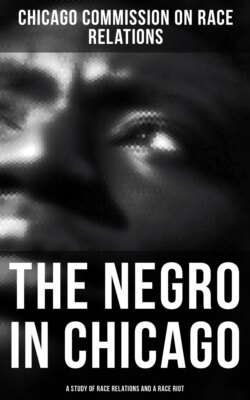Читать книгу The Negro in Chicago - A Study of Race Relations and a Race Riot - Chicago Commission on Race Relations - Страница 13
2. RACIAL OUTBREAK IN WAUKEGAN
May 31 and June 2, 1920
ОглавлениеWaukegan, Illinois, thirty-six miles north of Chicago and near the Great Lakes Naval Training Station of the United States Navy, was the scene of two riotous attacks during the nights of May 31 and June 2, 1920, on a lodging-house for Negroes, by bands of recruits on leave from the Naval Training Station. No lives were lost, and only two persons were hurt, neither of them seriously.
These outbursts scarcely classify as race riots. The chief motive seems to have been a desire for excitement on the part of young and active naval recruits.
The Sherman House was a dilapidated place on Genesee Street, the main street of the town. It had been abandoned by whites and was run as a lodging-house for thirty or thirty-five unmarried Negroes, chiefly factory workers. On the first floor was a poolroom and soft-drink "parlor," which some of the naval recruits had patronized.
A mischievous Negro boy of ten years, George Taylor, was primarily responsible for the outbreaks. On the afternoon of May 31 he and his little sister had been throwing stones at passing automobiles in Sheridan Road. One of these missiles broke the wind shield of an automobile driven by Lieutenant A. F. Blazier, an officer at the Great Lakes Station, who allowed this fact to become known to some of the recruits at the station. Late that evening an unorganized mob of recruits assembled at the Sherman House and threw stones, breaking nearly all the windows. The mob was rushed by all the available police in Waukegan, who took six prisoners. One reported incident was the chasing of a Negro by half a dozen bluejackets and marines and his rescue by the police.
Provost guards from the Naval Station rounded up the rioters and took them back to Great Lakes, thus ending the outbreak.
Two nights later, or June 2, 150 boys on leave from the Naval Training Station renewed the attack. They gathered in a ravine near the hotel and at ten o'clock they poured forth, led by a sailor carrying an American flag. The police had been warned and were ready with reinforcements.
About seventy-five feet from the lodging-house the police ordered the attackers to halt; no attention was paid to the command, and they fired their riot guns in the air, wounding two marines who were some distance away. Hand-to-hand fighting ensued, during which the police seized the flag and arrested two marines. The Great Lakes boys gathered about the police station and demanded their comrades.
Commander M. M. Frucht, executive officer of the Naval Station, who had already been sent to Waukegan by Commandant Bassett, appeared at the door and quieted the crowd with a promise that all concerned would have a square deal. He also advised them to return at once to the Naval Station.
The police released the two prisoners and gave back the flag. Two hundred provost guards from the Naval Station arrived in motor trucks while the crowd was at the police station.
Waukegan youths, evidently banded together for the purpose, searched the house of Edward Dorsey, Negro, at 905 Market Street, on the night of June 5. Ten of them, ranging from seventeen to twenty-two years, were arrested. They said they had heard that five white persons were held prisoners in Dorsey's home and that it was their intention to effect a rescue. It was asserted that a number of provost guards accompanied the crowd to the Dorsey house.
The general spirit of the people of Waukegan regarding Negroes may be judged from a proclamation by Mayor J. F. Bidinger, in which he disclaimed for the people of the city any intention to harass the Negro. Referring to reports that some of the white people of the town had participated in the disturbances, the mayor said: "In the first they did not, and in the second in no great numbers. Hoodlums generally run true to form and seldom overlook ready-made opportunity to manifest their peculiar taste in deviltry. Hence the mixing of a few of them into these fracases signifies nothing in so far as our general public is concerned."
Observers agreed with the mayor that the disturbances were not race riots. In this connection his proclamation said:
Now it is a definitely ascertained fact that no adult Negro was even remotely connected with the first stone-throwing; that the colored people did not then retaliate and have not since sought to retaliate in even the smallest measure; and that all the episodes have consisted simply of an attack upon people who have been as inoffensive throughout the entire affair as they could well be. All of which I submit stamps this affair as an example of disorderly conduct indeed, but not as a race riot.
